Wildebeest
Member
I'm talking about consumer, not specialist workstations. Star Fox was out before even Doom and used hardware accelerated 3d.PC had 3D accel before SNES.
I'm talking about consumer, not specialist workstations. Star Fox was out before even Doom and used hardware accelerated 3d.PC had 3D accel before SNES.
No one considers Keen one of the most important games, but it was a technical achievement, and a breakthrough for MS-DOS games in particular.
The other big thing, of course, was that it was kind of the big breakthrough game for the shareware model, which would completely take over the PC market for the next few years.
Umm no pc 3D accelerator cards Where not a thing until the mid to late 90s. Consoles and arcades destroyed pc games until the mid 90s as far as hardware goes.Western developed games trashed Japanese ones. Basing this on platformers is ironic because the NES reintroduced platformers to young kids in a devolved form that removed the fast action, multidirectional, and rpg elements for a simple run and jump to the right of the screen.
All innovation in genres were on dos or other computers while consoles were oversaturated with the same type of game until 3D.
If you grew up with the NES, SMB3 to Mega Drive Sonic may look like innovation or evolution but if you were old enough or had a finger on industry information, you knew it wasn't.
All hardware postNES had been designed with scroll platform games in mind. Every other genre was horrendous and way behind the curve only seen as evolution by those growing up on those consoles.
One of the reasons why even some Japanese developers were hesitant to leave NEC PC-88, PC-98, and FM Towns.
Most people don't know that consoles were heading toward a casket fast in revenue in the early 1990s' prompting reports that PC would kill console gaming. 3D luckily broke the cycle.
PC had 3D accel before SNES.
This is truth. The PC was definitely a business machine with a few good looking games but clunky still. As much as prince of Persia had beautiful animation it scrolled only when you left the screen it was more of a platform puzzler with simple fighting elements. NES and SNES had amazing looking games that had fast responsive controls and the arcade was the place to Be the arcade was the benchmark. Once Doom came with its fast paced gameplay and graphic the masses realised how good PC's could be then came Quake and games like decent appeared the PC started to come along leaps and bounds especially with 3D cards by the time of the Dreamcast a PC was the benchmark for graphics at home. Seeing as the Dreamcast was essentially an arcade system at home the PC was able to outperform it. Once the consoles started to get near to PC like quality well the arcades have died out. Still around for nostalgia but no where near tue level they were at least in the heyday.Umm no pc 3D accelerator cards Where not a thing until the mid to late 90s. Consoles and arcades destroyed pc games until the mid 90s as far as hardware goes.
Arcade games with their custom hardware that could cost more than a PC, sure. But console? Maybe original 8086 PCs. But the 286 was 1982, and EGA was 1984, and VGA in 1987.Umm no pc 3D accelerator cards Where not a thing until the mid to late 90s. Consoles and arcades destroyed pc games until the mid 90s as far as hardware goes.
Arcade games with their custom hardware that could cost more than a PC, sure. But console? Maybe original 8086 PCs. But the 286 was 1982, and EGA was 1984, and VGA in 1987.
Consoles had an edge for things like smooth scrolling at the time. But tell me how console destroyed PC releases like 1990's WingCommander (worse 1992 SNES version, 1994 SegaCD), 1992's Ultima Underworld (1997 Playstation version), 1993's Doom that every console was racing to try to match. 1993's Xwing, 1994's TIE Fighter (but that's becoming mid-90s).
In the very early 80s you had the Ultima and Wizardy series which directly influenced the creation of Final Fantasy and Dragon Quest which were seen as very stripped-down experiences versus what was on the PC.
You have a very nostalgic view on wing commander 1.But with a 486 pc with 6 megs of ram!
some still framed games benifited on pc a tiny bit, but not really that much.
pc emulated?:
snes emulated?:
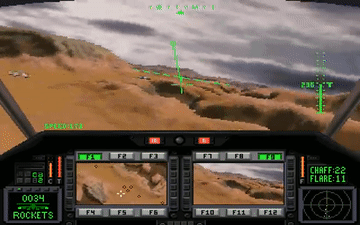
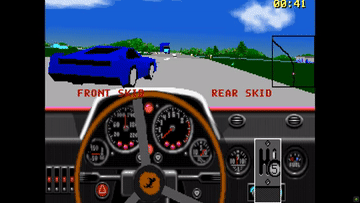
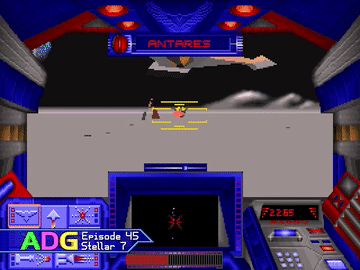
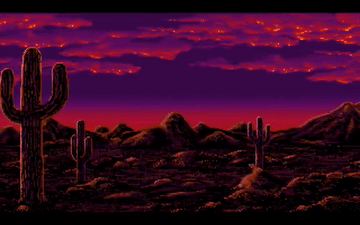
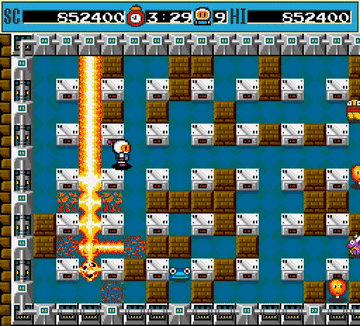
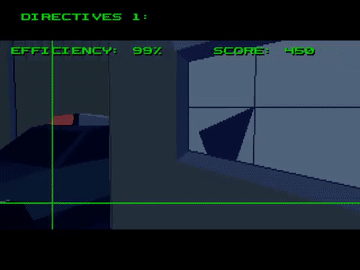
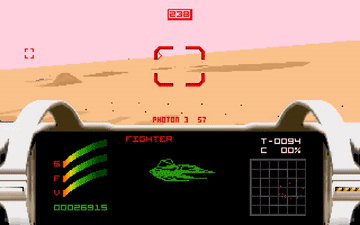
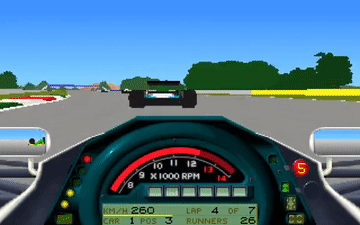
This is because platform games only became a major genre because of the NES. Run and Jump was the foundation of most games on the system, and the systems of the following generation.As someone who loves the DOS era, I have to say that PC platformers were absolute trash.
Even the ones that have some sort of cult status (Keen, Jackrabbit, etc) are simply horrible, horrible garbage games down to every element of their design.
You are wrong. Platformers were a staple of home computing gaming since Pitfall and Donkey Kong popularized the concept at the start of the 80s. Same with other 2d genres such as overhead maze games, breakout clones, shoot em ups, and so on. The PC was just bad hardware to implement them on, even compared to something like the C64. It was not a matter of budget or there not being a market. As people have said elsewhere, whatever 3d magic the PC could do at the time was due to the expensive high-end CPUs they had, which most consoles and older home computers simply did not have.Platform games saw the least investment on DOS, that is why the platform games released on it are not of higher quality. It's not that DOS was incapable because it was the strongest gaming machine available, but big studios simply didn't take the genre seriously enough to compete with consoles in that field, and based on dos platform sales they didn't need too.
When John Car made CK he wasn't praised for the games production, he was praised for how the game scrolled and his coding mastery. With his FPS games he was praised for both.
Isn't that It Came From The Desert on Amiga? From 1989?PC-DOS was much more powerful than any other consumer gaming platform of the time. These are examples of games that released only between 1990 and 1992:
You are wrong. Platformers were a staple of home computing gaming since Pitfall and Donkey Kong popularized the concept at the start of the 80s. Same with other 2d genres such as overhead maze games, breakout clones, shoot em ups, and so on. The PC was just bad hardware to implement them on, even compared to something like the C64. It was not a matter of budget or there not being a market. As people have said elsewhere, whatever 3d magic the PC could do at the time was due to the expensive high-end CPUs they had, which most consoles and older home computers simply did not have.
Are you talking about the higher resolution modes the C64 and Amiga supported, which were not commonly used for real time graphics? Lower resolutions were used for gaming, but they were still "bitmap" modes not text modes. Those bitmap modes did have hardware sprites. Amiga struggled later on because, as we both agree, I hope, the CPUs were very underwhelming compared to the new intel chips, and the "advanced" update to the graphics chip was a bit of a bodge job that didn't deliver.Well, strictly speaking what really made the difference was the fundamental nature of the display technology. Early home computers could do what they did because they primarily utilized tile/character-based screens as opposed to bitmaps. I say primarily because although the underlying even early home computers like the C64 had bitmap modes their usage was limited due to relative computational cost on the simple processers of the time.
Are you talking about the higher resolution modes the C64 and Amiga supported, which were not commonly used for real time graphics? Lower resolutions were used for gaming, but they were still "bitmap" modes not text modes. Those bitmap modes did have hardware sprites. Amiga struggled later on because, as we both agree, I hope, the CPUs were very underwhelming compared to the new intel chips, and the "advanced" update to the graphics chip was a bit of a bodge job that didn't deliver.
Amiga had features like chips which would allow access to onboard memory for graphics without having to go through the CPU. A video co-processor which allowed for vertical synching with CRT displays and back buffers and other iconic effects such as changing colors for every scan line and separate scrolling of two bitmaps with the front transparent. But the C64 was not the same as it at all, since Amiga had no "text modes" which could be used for certain tricks where "blocks" of graphics information could be moved around in tiles. Amiga did sometimes struggle with 2d platforming games, but it wasn't considered simply a bad system for them, as it was for Doom clones. There was never even any hint of any 3d graphics co-processor in the Amiga board which could take advantage of the onboard RAM to create 3d effects without going through the CPU.
I have no clue why you're bringing up 80s computers in a discussion about 1990s PC-DOS. Did you skip over my comparison between Duke Nukem and Sonic 1 to illustrate the production differences?You are wrong. Platformers were a staple of home computing gaming since Pitfall and Donkey Kong popularized the concept at the start of the 80s.
You are correct it is It Came From The Desert, but the PC-DOS version that released in 1990.Isn't that It Came From The Desert on Amiga? From 1989?
This is correct. The Amiga was kind of like a transitional neogeo for computer gaming and was top of the pack in 1985 but once 1989 hit its design flaws were too much to ignore. Unfortunately Commodore did not bother looking into a way to transition out of their proprietary hardware with later releases, resulting in the same weaknesses that made 3D and faster games harder to make.Where things got messy was the way the screen was laid out in memory. As I mentioned in my last post if you wanted to draw a single pixel onto a 16 colour screen it required 4 separate writes. Because 16 colours requires 4 bit-planes. Were the memory ordered in a byte-per-pixel format you could do the same job in a single write.
When you start trying to do 3D, even wire-frame 3D, you need fast access per pixel so it was absolutely crippling. This is also setting aside all the math you also need to do on a relatively low clocked 680x0 cpu!
It is true, in a way, that Sonic would have been possible on PC or Amiga with compromises. But that game was designed for the Megadrive hardware and the compromises for PC, at the time, would have been significant. There would also have been compromises for Amiga, but it would probably have come out better, I imagine. I just don't see how people who owned PCs at around 1990 were simply not interested in 2d action games with smooth animation, and I think you are just putting the cart before the horse. They were interested in them, but the software was just not up to standard, because the hardware was not suitable.I have no clue why you're bringing up 80s computers in a discussion about 1990s PC-DOS. Did you skip over my comparison between Duke Nukem and Sonic 1 to illustrate the production differences?
It's a weird example to use if you're trying to demonstrate how powerful the evolving PC platform was by the early 90s. I mean, it's identical to the version that ran on a computer that was fixed and unchanged since 1985.You are correct it is It Came From The Desert, but the PC-DOS version that released in 1990.
Yup and that's the amiga opening not dos.Isn't that It Came From The Desert on Amiga? From 1989?
Generally speaking (in terms of overall computational power) it wasn't.OK, that makes a lot of sense.
Why was IBM/DOS in the 80s so underpowered in comparison to Amiga though?
Here is the original Duke Nukem in 1991 in shareware episodic format:
Here is Sonic the Hedgehog released the same year on the Genesis:
The difference is not the platform itself because PC is much stronger than the Genesis. The difference is the amount of resources and money a studio is willing to allocate for the development of a platform game. PC studios with 1 exception never took the platform genre seriously enough to release a platform game that would be comparable to Sonic.
You're mixing up production values and comparable visuals with game engine implementation, like Sonics physics which wasn't my point. If you look at Duke Nukem and Sonic 1 that both came out in the same year, even ignoring the engines there is a clear divergence in production.It is true, in a way, that Sonic would have been possible on PC or Amiga with compromises. But that game was designed for the Megadrive hardware and the compromises for PC, at the time, would have been significant.
You are correct that developing comparable games graphically would be more difficult to reach on PC hardware, since PC is lacking the capabilities the two consoles have that helps developers produce those kinds of games regularly. I do not disagree with this.It's not that, it's mostly hardware related.
In the early 90's, a DOS PC could have a much stronger CPU (such as a 386) and much more RAM but the Genesis/SNES still had better graphics hardware for scrolling and sprites. So it depends on the genre.
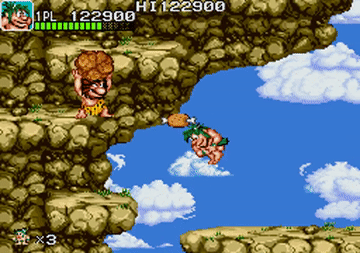

I don't want to seem disrespectful but I am not seeing anything in your response that tells me you read through my post because almost nothing in your comment is related to it.Draxon Gamer
I think you kinda overestimate the importance of production money. Yes, money can help with a lot of things, but again, it's not magic.
Nothing about DOOM was low production.DOOM was a low production value project.
And the reason why you are ignoring the worse looking DOS platform games that also scroll slowly one direction at a time is?So why all the other PC platform games look worse than Joe & Mac you ask? Maybe it's because Joe & Mac scrolls at a slower pace and only at one direction at the time. Unlike Keen,
Why are you inventing topics I never argued?Question is, do you believe something like Sonic, that's smooth, multi-direction and very, very fast, can be done on a 1991 PC? I still don't think so. Joe and Mac isn't a very strong case to make me think otherwise.
You can see the solution in the gifs. In Commander Keen you can see the whole screen moves smoothly per frame with the character like it does with any 2D console with acceleration silicon for compositing.Commander Keen is seen as a legendary franchise that 'proved' computers could have colorful scrolling platformers and is considered the series that launched ID Soft into celebrity status, leading to their work on Wolfenstein and Doom.
It's often considered one of the biggest technical achievements in gaming and an important milestone.
My question is: why?
Were there some DOS users who locked themselves from the outside world? Have these last few decades of poor journalism allowed this story to go unchallenged so long it stuck?
Let me show you why this shocks me in an extreme way.
Here is Commander Keen:

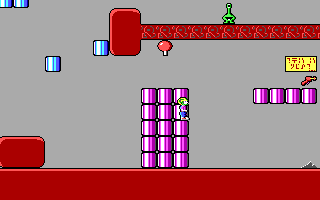
Here is an Amiga game from the same time:

What exactly are people saying that Carmack accomplished with Commender Keen?
I just saw a history video on a big game site that talked about how important Commander Keens impact was on the industry, and how Carmack used his magic fingers to produce something that no one else was able to do. It's a very common tale that's been around for decades.
But how do you look at Commander Keen next to a contemporary and still honestly believe that?
I don't see a single advantage Keen has over Spellfire. Keen looks like something a college kid threw together in his bedroom overnight for a college project. Due the next morning.
Lol no, almost every gaming capable device including the IBM itself had better scrolling games than Keen.
I had considered this but then found these PC games came out the same time:
https://m.youtube.com/watch?v=iQ4OOoc5DZY&pp=ygUNQ29udGludXVtIGRvcw==
https://m.youtube.com/watch?v=3-DzlT68o4Q&pp=ygULRG9zIHplbGlhcmQ=
and compared them to Keen:
Even if we only limit this to PC and the same time it still falls behind other games.
Maybe fans of Wolfenstein and Doom like him so much (and forgot about Romero) that they wanted to stretch his success back a few years?
Is it? The games in the videos above seem to be better achievements imo.

